Gaining every last bit of horsepower from your Mustang is crucial when competing against the competition.
Allowing as much cold air efficiently into your Mustang is just as crucial as letting it exhale that
air. Choosing whether you are going with long tube headers or shorty headers usually will depend on your
intentions for your Mustang build.
Exhaust Manifolds
Headers Explained
Long Tube Headers
Shorty Headers
Header Diameter
First understanding how your engine works is paramount in order maximizing horsepower and torque. Think
of your engine as a giant air compressor. It needs to inhale and exhale air efficiently to give your
Mustang the greatest potential for power gains. Just like you, you need to be able to breathe in and out
as easily as possible in order to function normally; the same system applies to your engine. The problem that stock exhaust manifolds have is that they are very restrictive, which causes the exhaust
gases to slow down as it leaves the engine into the exhaust system. As the saying goes the more air in,
more air out, means more power. But making sure the exhaust gases leave efficiently is the key to
maximizing your engine's full potential! Exhaust backpressure is a crucial variable. Exhaust backpressure is defined by the hydraulic resistance
that an exhaust system omits by discharging the spent exhaust gases into the atmosphere. A header is defined by tubes that are connected to each exhaust port on the cylinder head of the engine.
It is responsible for carrying exhaust gases out of the engine once the combustion cycle has completed.
Headers use a larger diameter tube which helps pull the exhaust gases out more efficiently. This helps
relieve back pressure during the collection process. Each tube is usually connected at different lengths
because of the spacing from each cylinder port. When all four tubes are connected at the end of a header
this is typically called a collector. Most modern headers will come with a merge spike for greater
exhaust flow. A merge spike is located on the inside of the collector and allows for smoother, more
directional airflow. Stock manifolds are typically designed to meet EPA guidelines and emissions. What a header does is
essentially act as a directional tube for each cylinder to guide the exhaust gases into the exhaust
system. If you are the type of Mustang enthusiast that wants to increase power, the RPM power band, overall
engine performance, and have the loud pedal on command at all times, then long tube headers are
the
choice for you! Due to the longer runner design, it allows the exhaust gases to be able to help pull in
the air-fuel charge much more efficiently, which will help with the scavenging process during the
combustion cycle. This will ultimately help you gain more horsepower and torque when in comparison to a
shorty style header. Some downsides to having long tube headers is they can take up a lot more space when compared to shorty
headers. When installing, it is sometimes necessary that you will have to unbolt the Front K-Member,
remove the starter, and support the engine with an under hoist stand in order to have better access to
the exhaust ports on the cylinder head. Due to modern technology, most long tube headers available on
the market today do not require serious modifications for installation. Most long tube headers will require that you receive a custom tune. This is due to the added airflow and
replacement of the factory catalytic converters; whether you go catless or high-flow. Adding a custom
tune will allow the PCM (Power Control Module) to balance the correct air-fuel management in the engine,
and adjust for the change in cell count for your catalytic converters. This is to ensure your engine
sustains its reliability, along with maximizing the most horsepower and torque efficiently. Most enthusiasts know that the factory exhaust manifold can be extremely restrictive to gaining more
horsepower and torque. What a shorty header will do, is allow for a greater diameter runner to allow for
more exhaust gases to run efficiently. Shorty
headers will solve the problem that most stock manifolds
can not. Some of the major benefits from shorty headers are that it will allow the enthusiast to create more
horsepower, and torque than factory, at an entry-level price point with a direct replacement design.
Unlike long tube headers, a shorty header allows for much more workroom such as the transmission,
starter, and shifter. Additionally, replacing a new clutch and flywheel is going to be a much easier job
with a set of short tube headers. This will ultimately save you time and money in the process. Most
shorty headers will allow for a factory-connect to the rest of your exhaust system. One of the biggest downfalls to having shorty headers is that it won't allow for horsepower gains at
higher RPM ranges as well as a long tube header setup. However, shortys will provide that low-end torque
that all Mustang enthusiasts know and love. When it comes to choosing header size, it all really depends on what your goals are for the build. Most
commonly 1-3/4” and 1-5/8” are going to be most common for vehicles that are seeking peak gains without
breaking the bank, depending on your Mustang's engine. When you step up to a 1-7/8” or 2” header, this
is where the most performance is going to come from the larger diameter. This will allow for the most
horsepower and torque gain. If your goal is 1,000 WHP this is going to be your one-way ticket to that
magical four-digit number! Just note that too large of a diameter, can cause a disruption in airflow which will kill your Mustang's
performance. While too little can be restrictive, which will kill horsepower and torque. If you need
help deciding, don't hesitate to reach out to our talented team of enthusiasts for guidance on your
build!Mustang Long Tube vs Shorty Headers
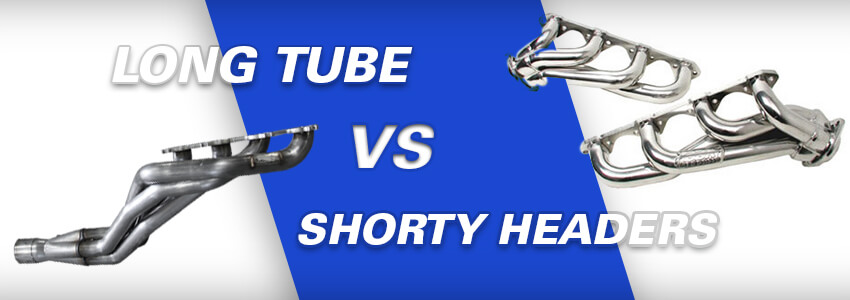
What Is An Exhaust Manifold?
What Are Headers?
Types Of Headers
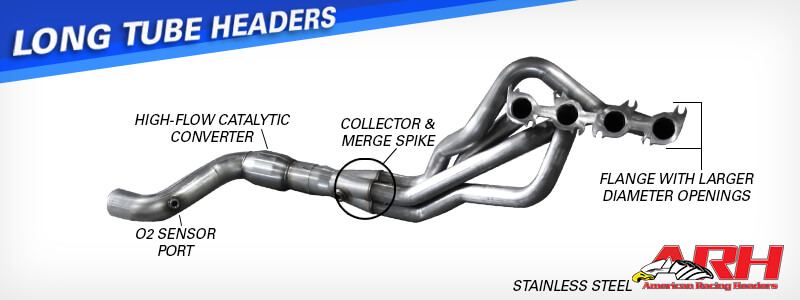
What Are Long Tube Headers?
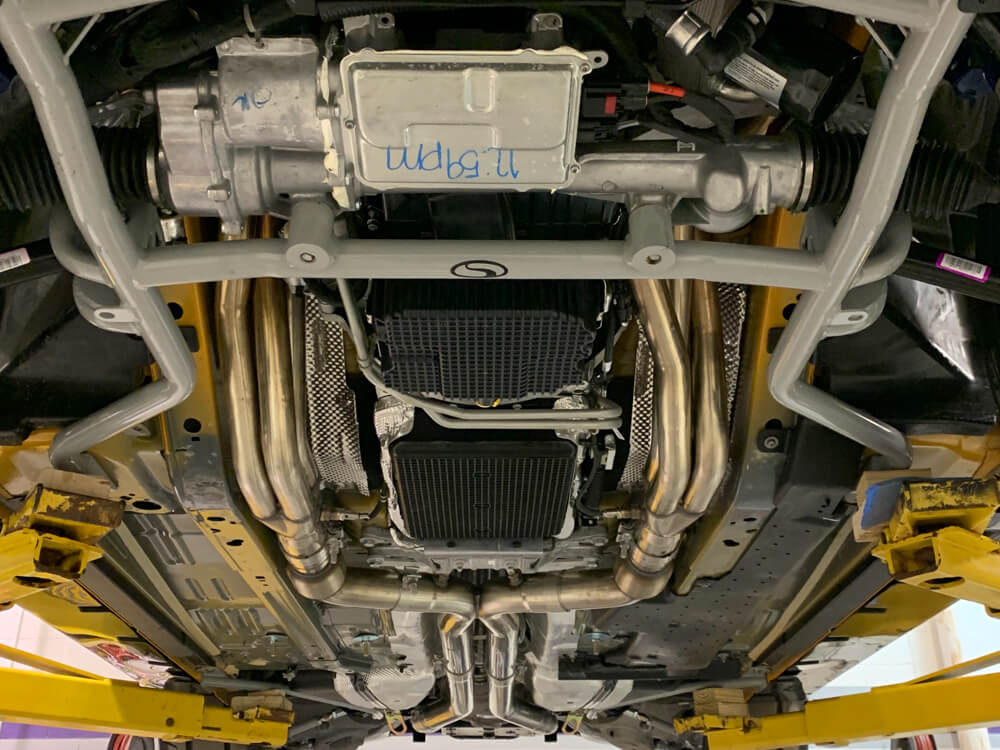
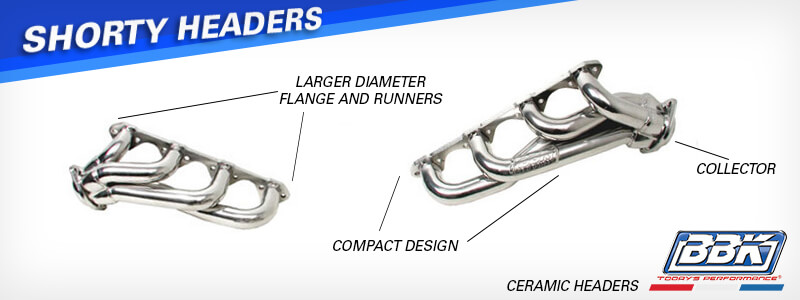
What Are Shorty Headers?
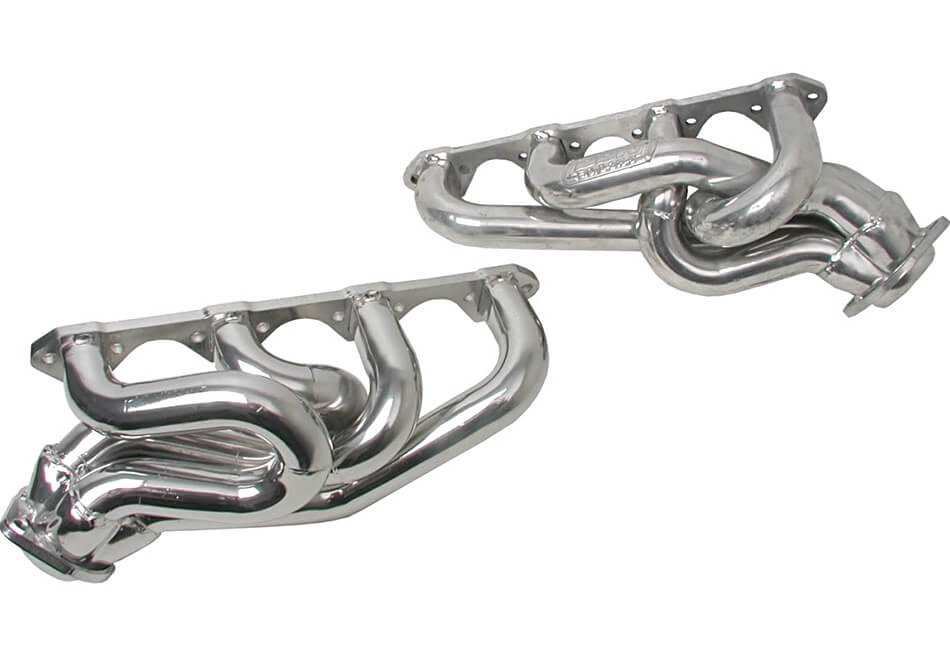
What Header Size Should I Choose?
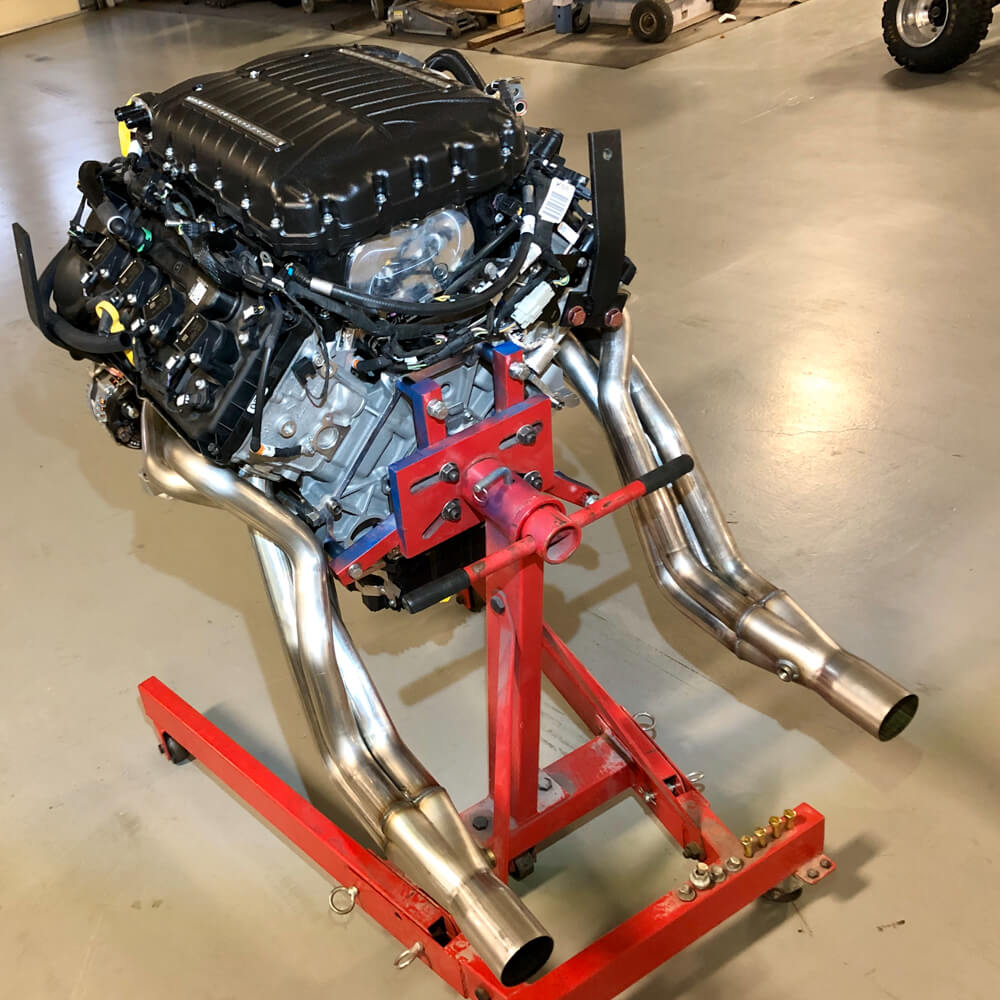
Related Articles




